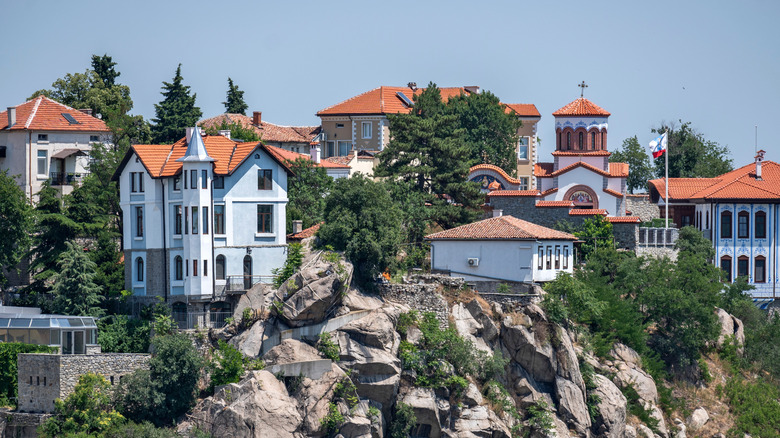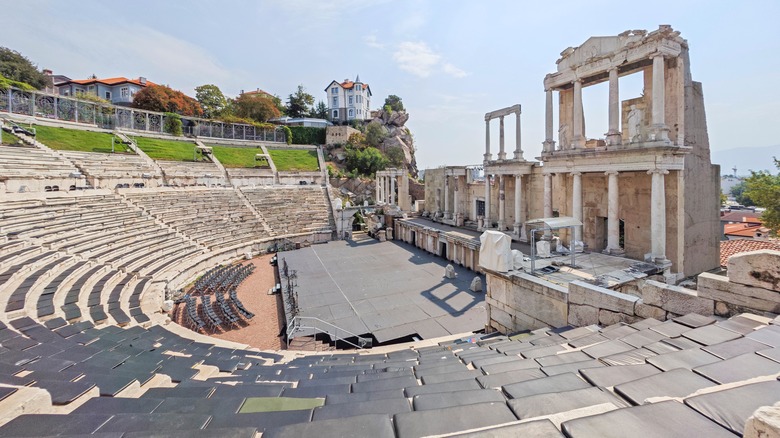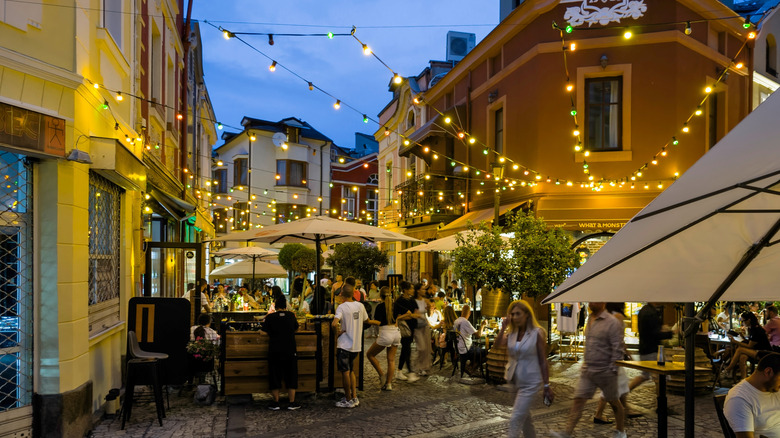Europe's Oldest City Is An Underrated Cultural Hub Of Ancient Ruins, Arts, And Charm
If there's one thing European countries have plenty of, it's ancient ruins. While millions of visitors clamour each year to catch a glimpse of artifacts left behind by the once great empires of Rome or Athens, one European city set in the heart of southern Bulgaria sits idly by, waiting for history and culture lovers alike to pass through its streets.
Founded in 6000 BCE, Plovdiv, Bulgaria, is considered Europe's oldest continuously inhabited city. Known as the city of the seven hills, Plovdiv has 200 archeological sites and ancient ruins, making it a major cultural center in Eastern Europe. Though it isn't as widely visited as some of its popular historical counterparts, this is what makes it so unique. Plovdiv simply exists — layered and full of life — offering a distinctly Eastern European flavor that perfectly balances antiquity with modernity.
Plovdiv sits as not only one of Europe's oldest cities, but also a living museum of past civilizations. It has been home to Thracians, Romans, Byzantines, Ottomans, and today, Bulgarians — each civilization leaving traces of historical significance. The city was honorably named the European Capital of Culture in 2019, and after a day of exploring, it's easy to see why. Here, you'll find an ancient Roman theater set against modern, ornately decorated cafes and 19th-century Bulgarian Revival houses converted into boutique hotels and art galleries. With its unique blend of Roman ruins, Ottoman influences, 19th-century Revival architecture, and an ever-adapting modern-day art scene, Plovdiv is a dream destination for lovers of history, art, and anyone seeking an authentic "undiscovered" European experience.
Spend the day exploring Plovdiv
Visitors to Plovdiv can start the day by meandering through the cobbled streets of the Old Town, where charming, colorful homes lead the way down narrow lanes. For a historic glimpse into stunning Bulgarian National Revival architecture, pay a visit to the Balabanov House, the Hindliyan House, or the Lamartin House, where you can explore the halls of these 19th-century homes. Must-visit museums include the Ethnographic Museum, showcasing exhibits of local crafts and traditions, and the Archeological Museum.
From here, visitors can explore one of the best-preserved Roman theaters — the Philipoppol Ancient Theater. The theater was constructed during the time of the Roman emperor Marcus Ulpius Trajan (98–117 AD) and discovered during archaeological excavations from 1968 to 1979 by the Plovdiv Archaeological Museum. The best part is that the theater is fully functional today, operating as a stage for opera, music, and drama, with big annual events like the International Folklore Festival, the Opera Festival "Opera Open", the Rock Festival "Sounds of Ages," and many others.
Speaking of the Roman period, set partially beneath the main pedestrian street are the semi-preserved remains of an ancient Roman Theater, which once held 30,000 spectators. Visitors can view the exposed portion from street level or make their way down to watch a 3D movie about its origins for a small fee. Continuing with cultural education, a visit to Plovdiv would be incomplete without exploring the Kapana District, or the "Trap". Here, visitors will find an eclectic blend of galleries, workshops, ateliers, studios, delicious restaurants, craft beer bars, and shops. With daily activities, concerts, festivals, theatrical performances, art installations, and organized social events, it's the city's cultural heartbeat, and a fantastic spot to spend an evening in Plovdiv.
Where to stay and how to get to Plovdiv
The city has a host of places for visitors to spend the night — everything from cheaper hostels to lavish five-star hotels. One honorable mention is Hostel Old Plovdiv, located in the Old Town. The hostel has a mix of dorms and private rooms, and the gorgeous interior feels as though you've stepped back in time. For something a bit more bougie, just a few steps from the amphitheater is Hotel Gallery 37 — a beautiful boutique hotel with the perfect mix of old-world charm and modern-day comfort. While there are many different accommodation options to choose from, if you're looking to be close to the action, look for a place either in Kappana or the Old Town.
As the second largest city in Bulgaria, getting to Plovdiv via public transport is fairly straightforward. Since Bulgaria is an older country, the train system here is a bit slower, so driving or taking a bus is a better option if you're looking for speed. Several companies go from Sofia (Bulgaria's capital) to Plovdiv daily, and the journey takes about two hours. If you choose to take the train (the journey takes about 2-and-a-half hours from Sofia), you can check the timetable here.
A walk to the center from the bus or train station takes about 15 minutes, and taxis are also available. Even better news for those traveling to the EU: Bulgaria recently joined the Schengen Area, meaning it's now part of the EU's open border agreement (meaning you can travel here within the 90-day Schengen visa). Whether you're looking to explore Roman relics, sip coffee in Kapana, or experience one of the many museums, Plovdiv invites visitors to slow down and enjoy a stunning piece of European history.


